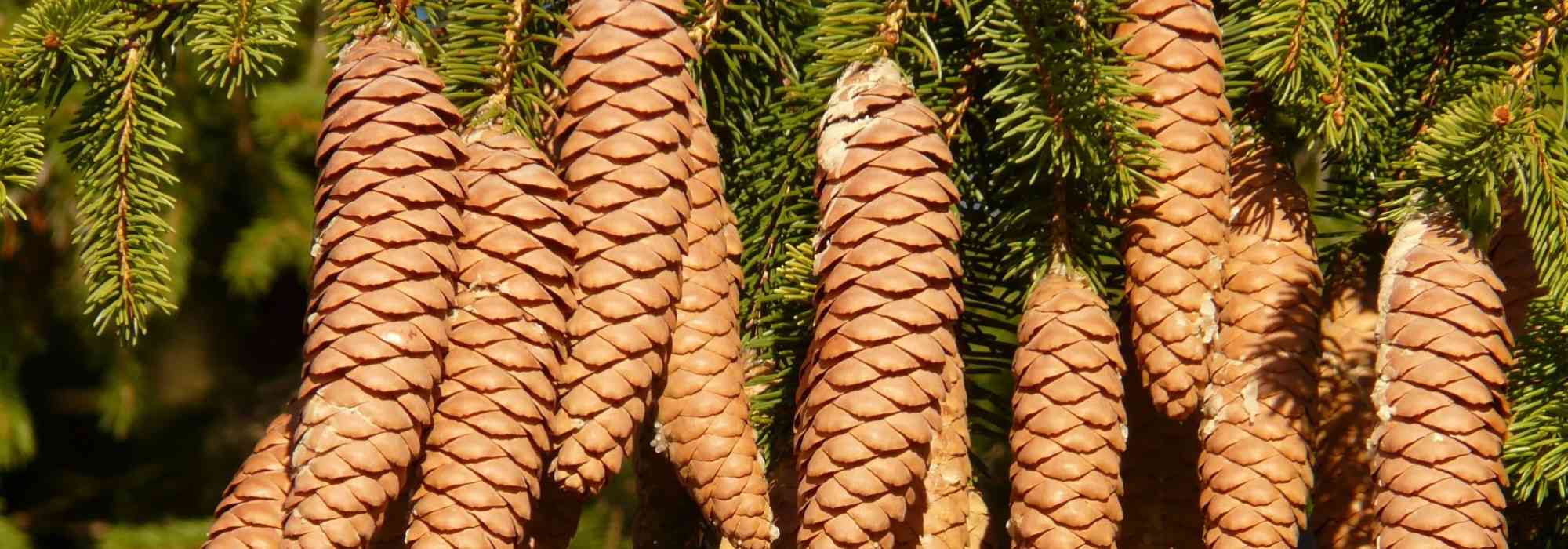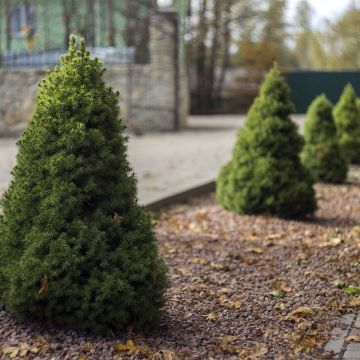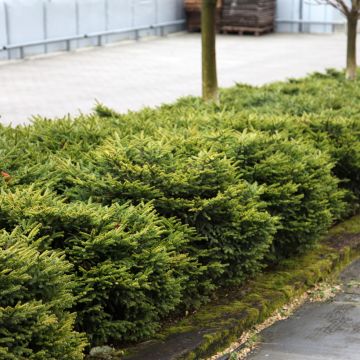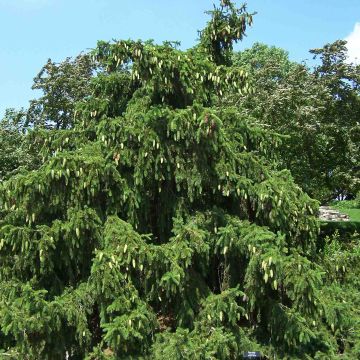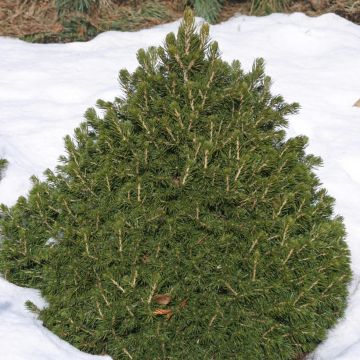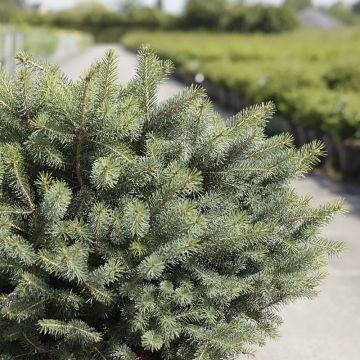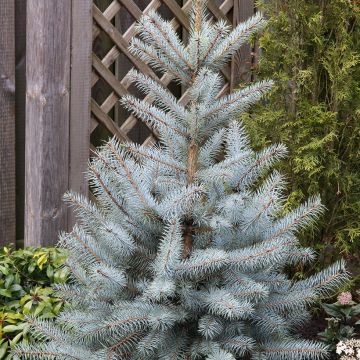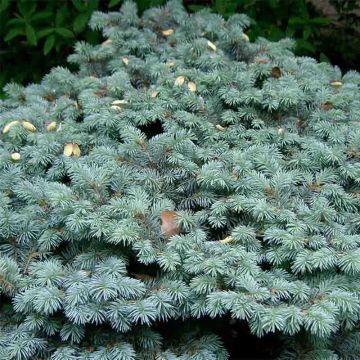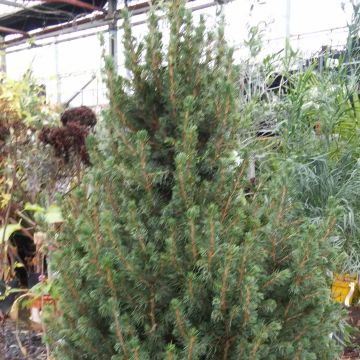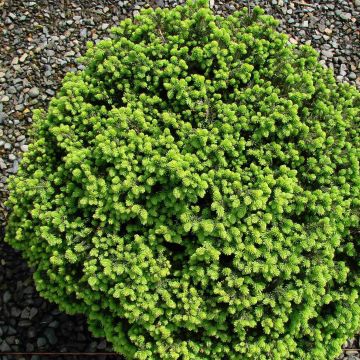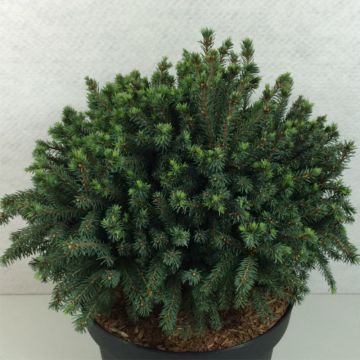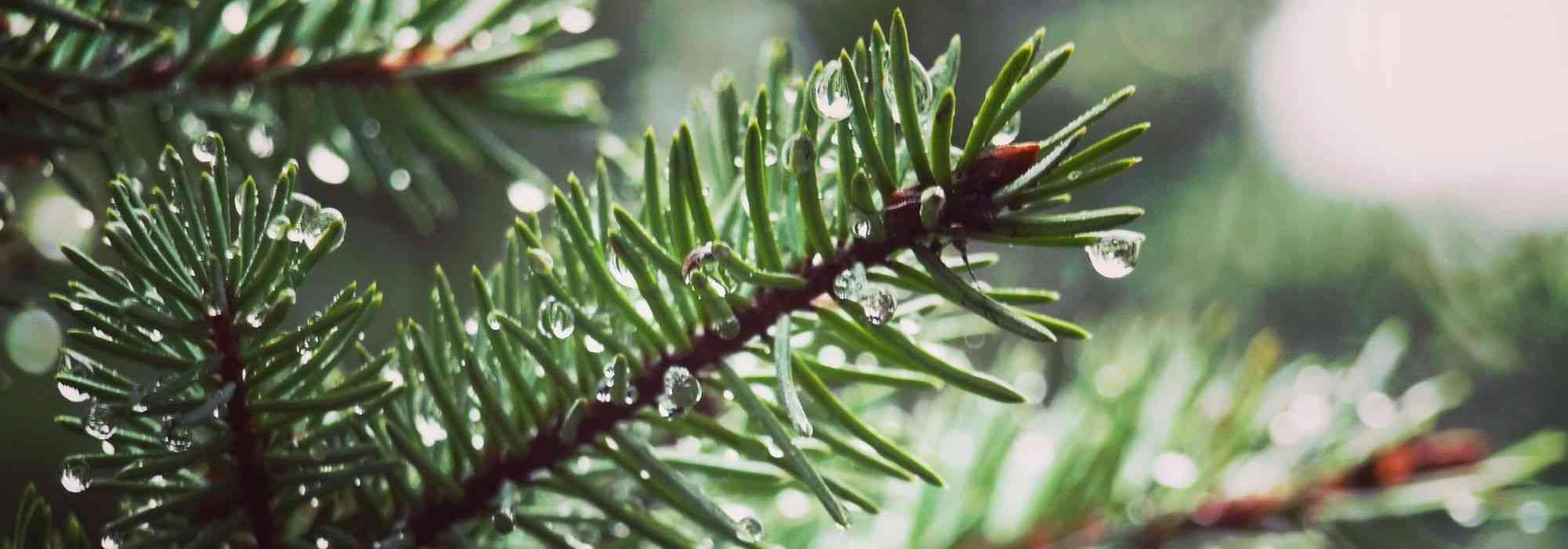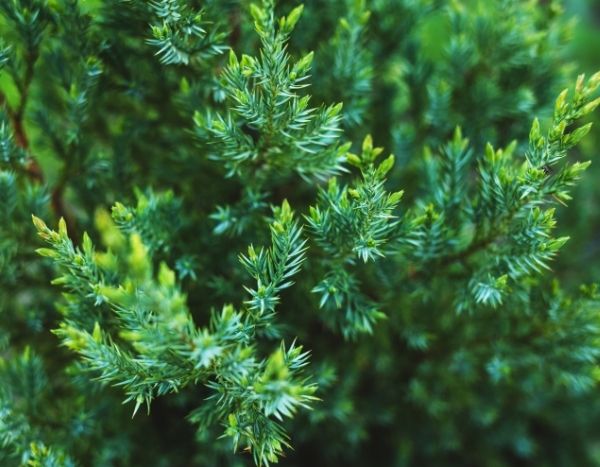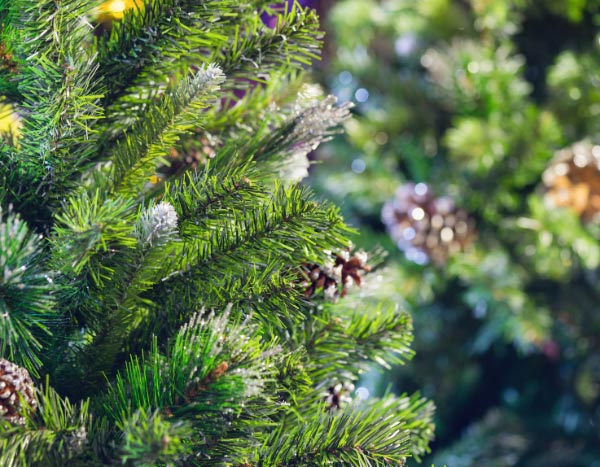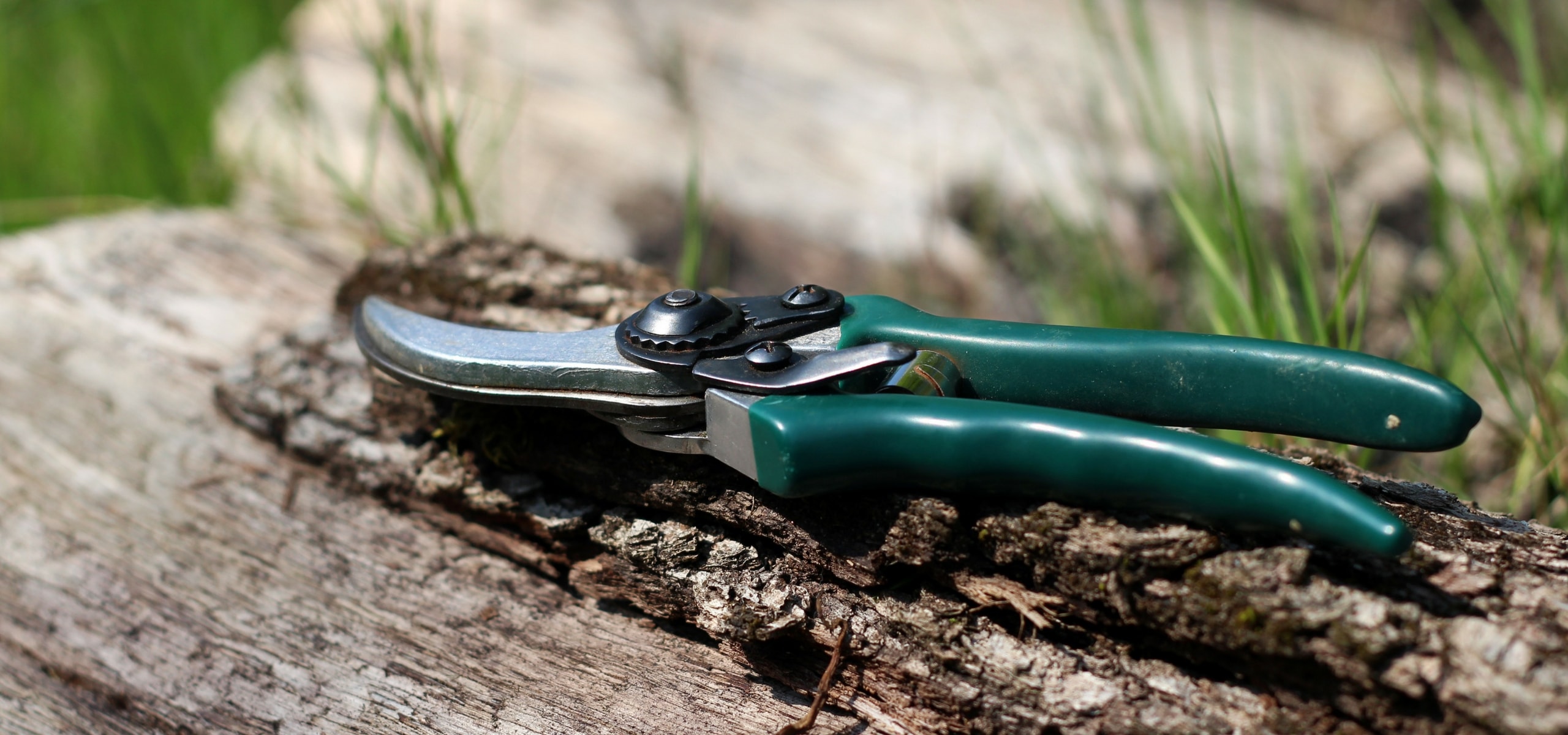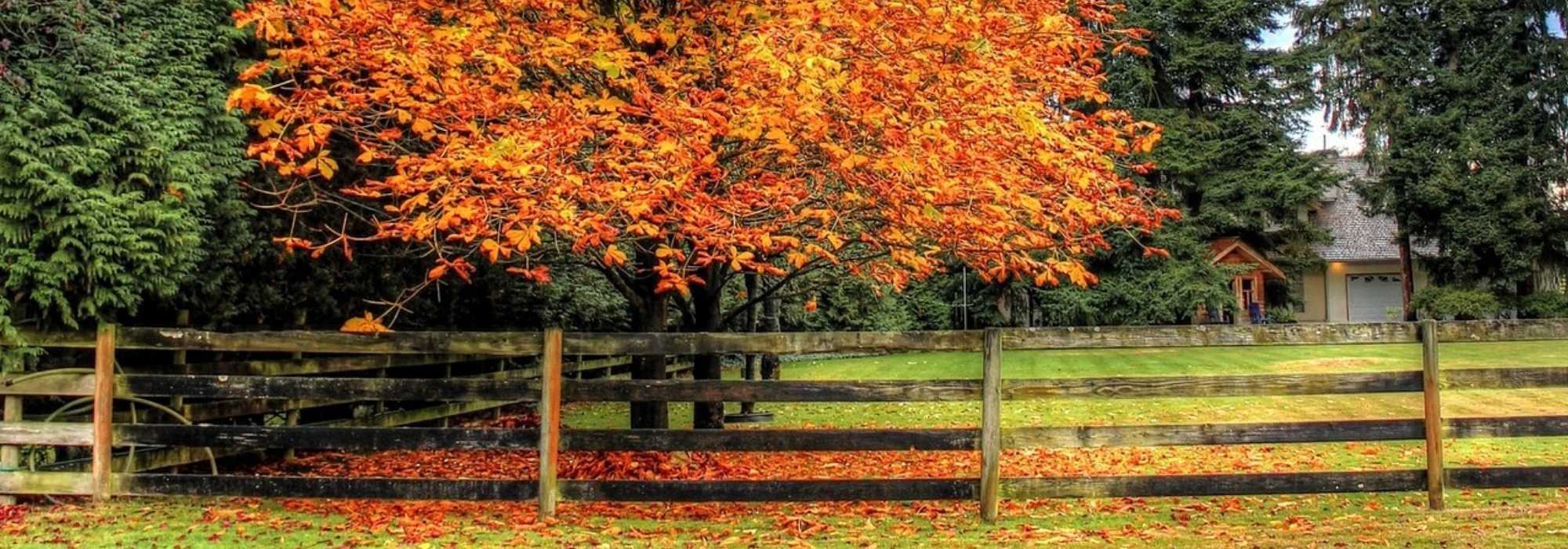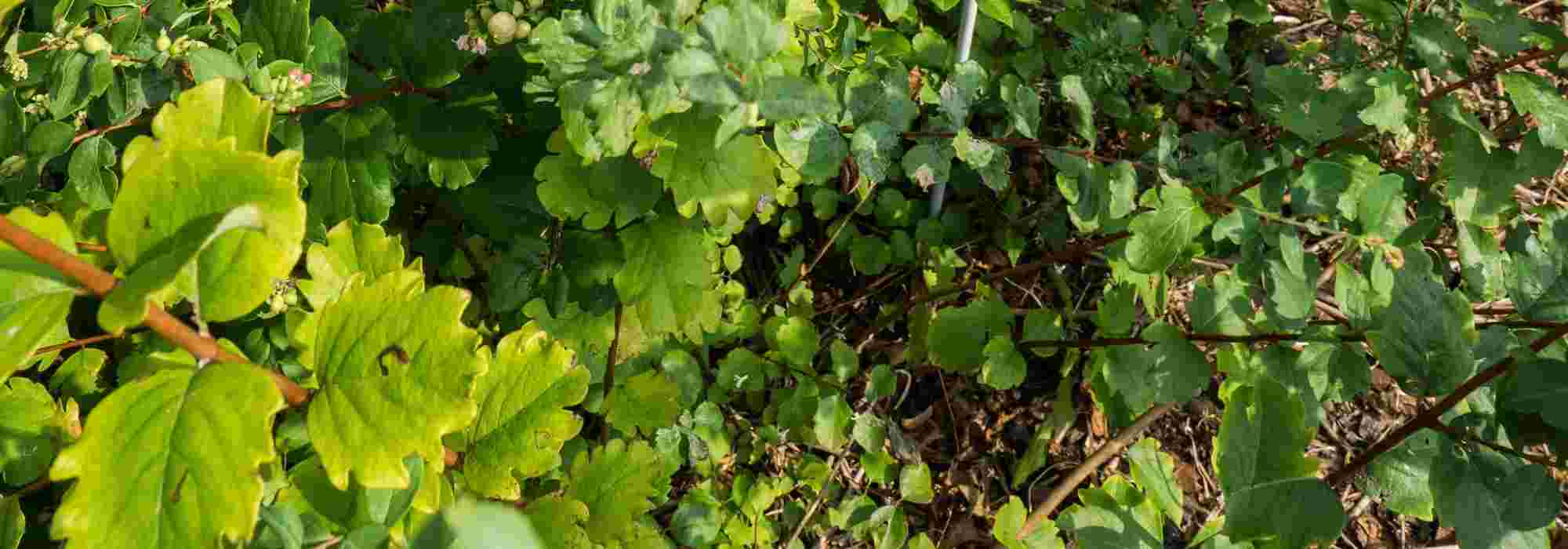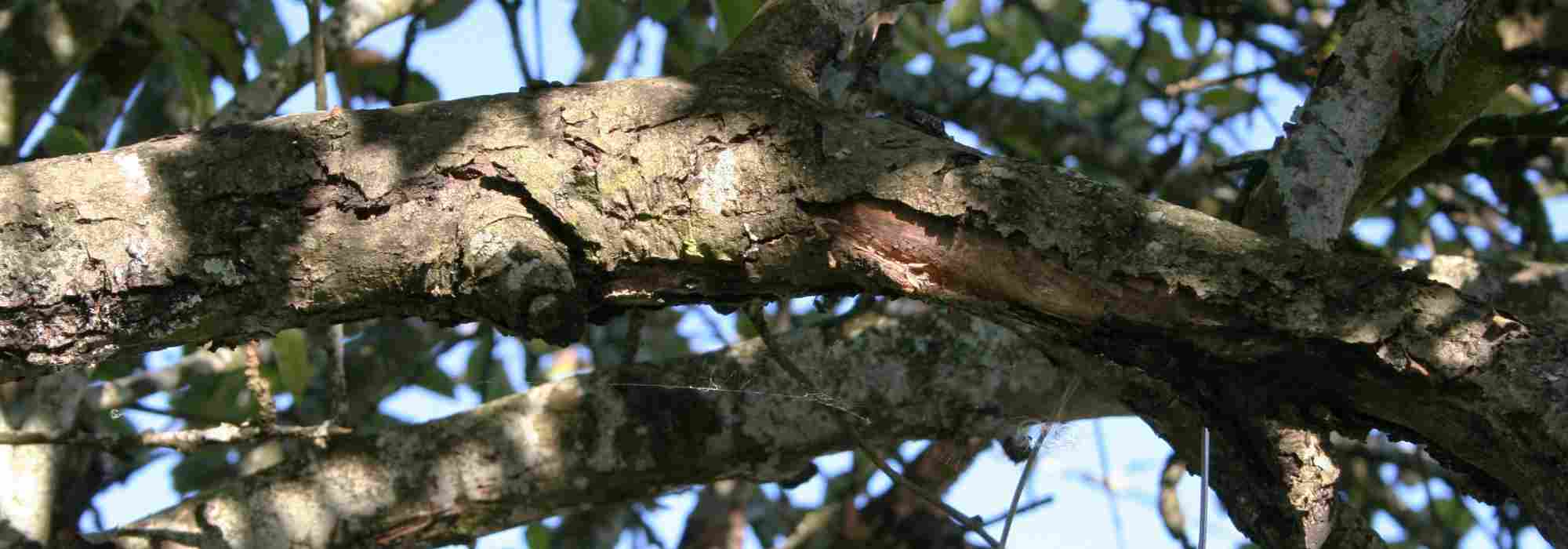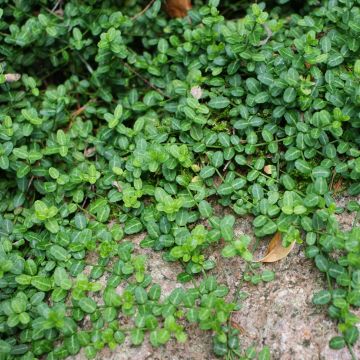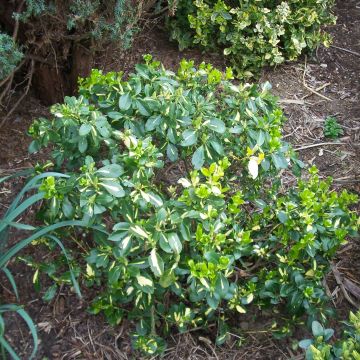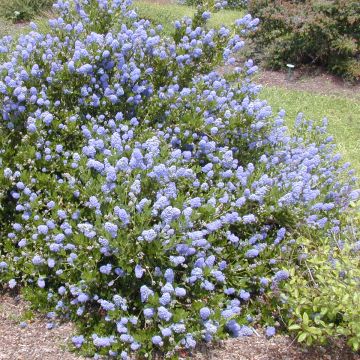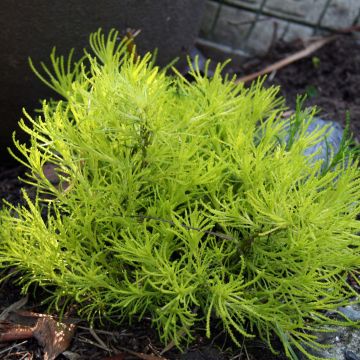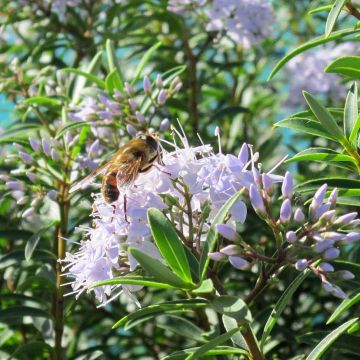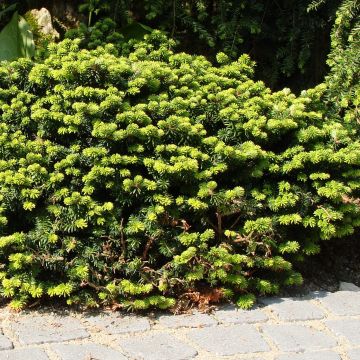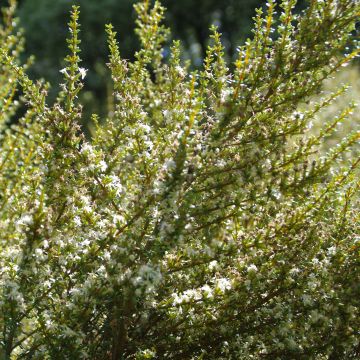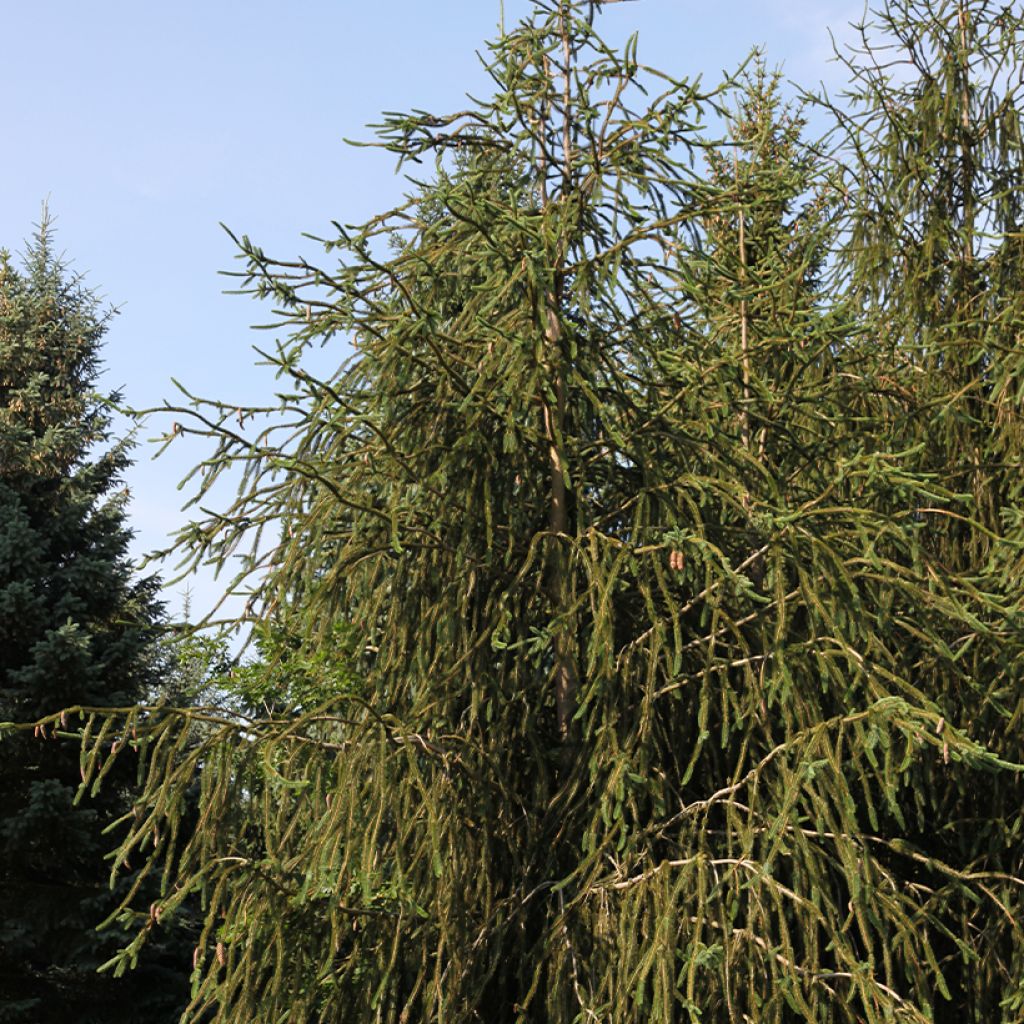

Picea abies Virgata - Snake fir
Picea abies Virgata - Norway Spruce
Picea abies Virgata
Norway Spruce, European Spruce
Special offer!
Receive a €20 voucher for any order over €90 (excluding delivery costs, credit notes, and plastic-free options)!
1- Add your favorite plants to your cart.
2- Once you have reached €90, confirm your order (you can even choose the delivery date!).
3- As soon as your order is shipped, you will receive an email containing your voucher code, valid for 3 months (90 days).
Your voucher is unique and can only be used once, for any order with a minimum value of €20, excluding delivery costs.
Can be combined with other current offers, non-divisible and non-refundable.
Home or relay delivery (depending on size and destination)
Schedule delivery date,
and select date in basket
This plant carries a 24 months recovery warranty
More information
We guarantee the quality of our plants for a full growing cycle, and will replace at our expense any plant that fails to recover under normal climatic and planting conditions.
Would this plant suit my garden?
Set up your Plantfit profile →
Description
Picea abies 'Virgata' stands out as one of the most fantastical spruce trees. This vigorous cultivar, with substantial growth, is characterised by an irregular, asymmetrical, generally conical, and disordered habit. Its branches seem to constantly waver between sky and earth. It is best used as a standalone specimen, its peculiar silhouette making a striking statement in a large garden.
The 'Virgata' spruce is also sometimes sold under the name Picea abies 'Snake Branch'. It is a mutation of the botanical species Picea abies, also known as the Norway spruce or red fir. The latter is an evergreen conifer belonging to the Pinaceae family, native to northern Europe, particularly Scandinavia. In its natural environment, it typically has a conical, pyramidal habit and can reach heights of 30 m or more in Eastern Europe. This species is traditionally used as a Christmas tree in Europe. It thrives in well-drained, cool soils and is unfazed by very low temperatures. Picea abies 'Virgata' stands apart from other members of its family due to its bizarre and unruly habit. Unlike the classic pyramidal shape of spruces, 'Virgata' features irregularly growing branches, giving it a highly unusual appearance. The 'Virgata' spruce is a medium to large-sized tree, with fairly rapid growth, eventually reaching 12 to 15 m in height with a spread of 4 to 6 m. Its trunk extends up to the leading shoot, and the irregularly arranged branches do not form distinct tiers. In the upper part of the crown, the branches are erect, while elsewhere on the tree, they may be horizontal or trailing. These twisted, sparsely branching boughs bear shoots that trail down to the ground in long, tangled tufts, adding a dramatic and wild character to the tree's silhouette. The foliage is dense and dark green, composed of short, prickly needles densely arranged in clusters. The lighter young shoots in spring contrast with the older foliage. A mature specimen produces cones. The terminal female cones are initially upright and resemble reddish cigars before becoming pendulous. The male pollen sacs appear on the previous year's shoots, shaped like oval spindles and coloured orange-yellow. The spruce's root system is shallow and running, making mature trees difficult to transplant and particularly vulnerable to wind.
The extraordinary 'Virgata' Norway spruce is primarily used as a specimen tree. Its ghostly silhouette appears animated and stands out strikingly against a clear sky. It can be planted on a large lawn or near a swimming pool, as it complements geometric lines and stone structures beautifully. It also works well near water features, such as overlooking a rocky scree. It is ideal for adding height to beds of dwarf conifers. This variety is also favoured in Japanese-style or contemporary gardens, where its atypical silhouette can be showcased as an artistic element. At its base, you might plant heathers, ferns, or Japanese forest grass, for example.
Plant habit
Flowering
Foliage
Botanical data
Picea
abies
Virgata
Pinaceae
Norway Spruce, European Spruce
Cultivar or hybrid
Other Picea
View all →Planting and care
Plant picea abies 'Virgata' from September to November and from February to May in deep, well-drained, light, preferably neutral to acidic soil that retains moisture in summer. Choose a very sunny or partially shaded spot, sheltered from prevailing winds. Soak the root balls thoroughly before planting. Add organic matter at planting time and water generously for the first few years, as well as during prolonged dry spells. Apply a special conifer fertiliser every year in April and hoe the soil in summer. This extremely hardy conifer dislikes heavy, waterlogged soils in winter.
Planting period
Intended location
Care
Planting & care advice
This item has not been reviewed yet - be the first to leave a review about it.
Similar products
Haven't found what you were looking for?
Hardiness is the lowest winter temperature a plant can endure without suffering serious damage or even dying. However, hardiness is affected by location (a sheltered area, such as a patio), protection (winter cover) and soil type (hardiness is improved by well-drained soil).

Photo Sharing Terms & Conditions
In order to encourage gardeners to interact and share their experiences, Promesse de fleurs offers various media enabling content to be uploaded onto its Site - in particular via the ‘Photo sharing’ module.
The User agrees to refrain from:
- Posting any content that is illegal, prejudicial, insulting, racist, inciteful to hatred, revisionist, contrary to public decency, that infringes on privacy or on the privacy rights of third parties, in particular the publicity rights of persons and goods, intellectual property rights, or the right to privacy.
- Submitting content on behalf of a third party;
- Impersonate the identity of a third party and/or publish any personal information about a third party;
In general, the User undertakes to refrain from any unethical behaviour.
All Content (in particular text, comments, files, images, photos, videos, creative works, etc.), which may be subject to property or intellectual property rights, image or other private rights, shall remain the property of the User, subject to the limited rights granted by the terms of the licence granted by Promesse de fleurs as stated below. Users are at liberty to publish or not to publish such Content on the Site, notably via the ‘Photo Sharing’ facility, and accept that this Content shall be made public and freely accessible, notably on the Internet.
Users further acknowledge, undertake to have ,and guarantee that they hold all necessary rights and permissions to publish such material on the Site, in particular with regard to the legislation in force pertaining to any privacy, property, intellectual property, image, or contractual rights, or rights of any other nature. By publishing such Content on the Site, Users acknowledge accepting full liability as publishers of the Content within the meaning of the law, and grant Promesse de fleurs, free of charge, an inclusive, worldwide licence for the said Content for the entire duration of its publication, including all reproduction, representation, up/downloading, displaying, performing, transmission, and storage rights.
Users also grant permission for their name to be linked to the Content and accept that this link may not always be made available.
By engaging in posting material, Users consent to their Content becoming automatically accessible on the Internet, in particular on other sites and/or blogs and/or web pages of the Promesse de fleurs site, including in particular social pages and the Promesse de fleurs catalogue.
Users may secure the removal of entrusted content free of charge by issuing a simple request via our contact form.
The flowering period indicated on our website applies to countries and regions located in USDA zone 8 (France, the United Kingdom, Ireland, the Netherlands, etc.)
It will vary according to where you live:
- In zones 9 to 10 (Italy, Spain, Greece, etc.), flowering will occur about 2 to 4 weeks earlier.
- In zones 6 to 7 (Germany, Poland, Slovenia, and lower mountainous regions), flowering will be delayed by 2 to 3 weeks.
- In zone 5 (Central Europe, Scandinavia), blooming will be delayed by 3 to 5 weeks.
In temperate climates, pruning of spring-flowering shrubs (forsythia, spireas, etc.) should be done just after flowering.
Pruning of summer-flowering shrubs (Indian Lilac, Perovskia, etc.) can be done in winter or spring.
In cold regions as well as with frost-sensitive plants, avoid pruning too early when severe frosts may still occur.
The planting period indicated on our website applies to countries and regions located in USDA zone 8 (France, United Kingdom, Ireland, Netherlands).
It will vary according to where you live:
- In Mediterranean zones (Marseille, Madrid, Milan, etc.), autumn and winter are the best planting periods.
- In continental zones (Strasbourg, Munich, Vienna, etc.), delay planting by 2 to 3 weeks in spring and bring it forward by 2 to 4 weeks in autumn.
- In mountainous regions (the Alps, Pyrenees, Carpathians, etc.), it is best to plant in late spring (May-June) or late summer (August-September).
The harvesting period indicated on our website applies to countries and regions in USDA zone 8 (France, England, Ireland, the Netherlands).
In colder areas (Scandinavia, Poland, Austria...) fruit and vegetable harvests are likely to be delayed by 3-4 weeks.
In warmer areas (Italy, Spain, Greece, etc.), harvesting will probably take place earlier, depending on weather conditions.
The sowing periods indicated on our website apply to countries and regions within USDA Zone 8 (France, UK, Ireland, Netherlands).
In colder areas (Scandinavia, Poland, Austria...), delay any outdoor sowing by 3-4 weeks, or sow under glass.
In warmer climes (Italy, Spain, Greece, etc.), bring outdoor sowing forward by a few weeks.


































